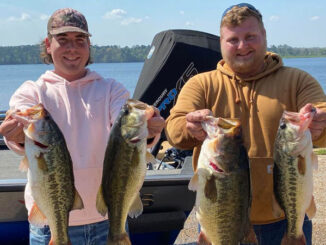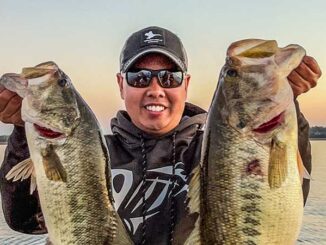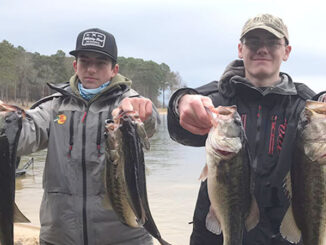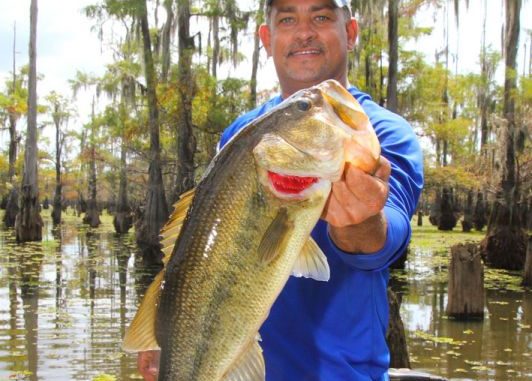
This 13,800-acre North Louisiana lake is home to some lunker largemouths — here’s how one local tournament angler targets them during the dog days of summer.
The drive from Morgan City to Natchitoches was a long four hours after I knocked off from my day job at 5 o’clock. And, by the time my wife and I checked into the Chateau Saint Denis Hotel downtown, it was after 9 p.m. — and I was just hearing from Pure Fishing ambassador Jimmy Jeansonne.
We were attending the Louisiana Outdoor Writers Association conference, and that meant doing a little fishing the next morning.
Jeansonne had been busy much of the day organizing the event and pairing writers with local volunteer anglers who would act as our guides. I drew local contractor Jerry Coutee, an avid tournament bass angler and someone extremely familiar with the local waters in that part of the state.
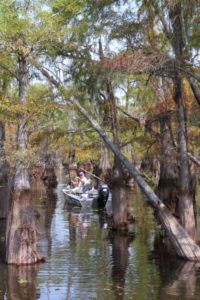
What’s more, of the many places Coutee could have chosen around Natchitoches (like the Red River or Sibley Lake), he selected Black Lake for our excursion in late summer — perhaps the most difficult time of year to catch bass.
Why Black Lake?
For starters, Black Lake is a 13,800-acre public lake, encompassed by some 50 miles of shoreline. Its average depth is a modest 8 feet, with a maximum depth of 18 feet in places. And, according to the Louisiana Department of Wildlife and Fisheries, the lake’s water fluctuates roughly 3 to 4 feet.
Highway 9 essentially separates the lake in two. The portion of lake on the western side of the bridge is known as Clear Lake, and the eastern side is called Black Lake.
Considered a ‘rift’ lake formed by a massive log jam along the Red River back in the 1800s (that also created lakes Bistineau and Saline), Black Lake is a fertile body of water well known for black bass, both largemouth and spotted.
“It’s a natural cypress and tupelo bottom lake, where sometime in the late 80s they began stocking it with Florida bass and they took to it very well. It’s almost like their native environment in Florida,” Jeansonne said. “So, Black Lake has always been known for big fish. It definitely got a boost in the arm with the Florida bass.
“Today, when you go to fish a tournament on Black Lake, the winning stringers are typically in the 25-pound range for five fish. That’s pretty stout, even when you compare it to Toledo Bend.”
A review of the LDWF management plan revealed some 2.1 million Florida bass have been stocked in Black Lake since 1987. And there’s no doubt bass anglers have reaped the benefits of the department’s efforts.
Jeansonne’s description pretty much jived with Coutee’s reasoning when we launched at Chandler’s Landing.
“We could have gone somewhere else and maybe caught a bunch of fish, but I wanted to go to Black Lake,” Coutee said. “Where we could catch some big fish.”
Over the years during tournaments on Black Lake, he’s weighed-in two 10-pound bass, one 9-pounder and several 8s, winning big-fish honors each time. He also said his son and a friend had fished the lake the week before — and caught a monster 13-pounder.
High heat tactics
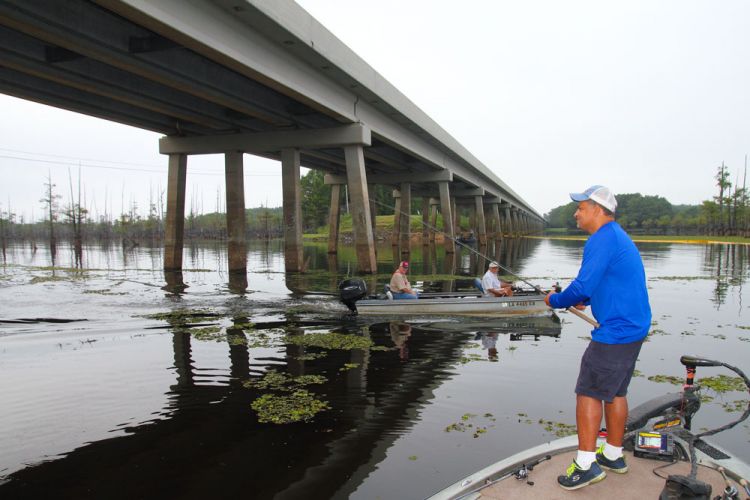
There’s a reason why they’re called the dog days of summer. Essentially, July, August and most of September in Louisiana are flat out hotter than blazes. Jeansonne said it’s a time when the fish typically don’t bite well, which places a greater emphasis on locating them.
“You have one main channel that runs through the lake — Black Lake Creek, basically. There are huge sloughs that also run through there. So, just imagine an old slough running through the woods that kind of connects up with a channel,” Jeansonne said. “Typically, at this time of year your better fish are going to be close to the channel or on the channel itself. In any case, they’re not going to be very far off of it. It’s a little deeper water, where it’s cooler for them.”
Flats are located in many places along the channel’s edge, and could be 4 to 6 feet deep depending on the lake’s water level. And the channel itself might be 6 to 7 feet deeper.
Bass are going to hang right on the lip of that channel, Jeansonne said, particularly around and beneath the trees that grow along it.
Tactics he suggested include pitching plastic worms, jigs, or squarebill crankbaits along the edges of these creeks.
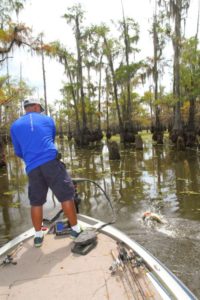
Black Lake is also subject to periodic drawdowns to control giant salvinia. However, during normal water conditions, Jeansonne said topwater baits like frogs, Zara Spooks and Rapala Pop-Rs are typically all good in the morning even during the hottest times of the year.
We hadn’t been fishing long when the water exploded beneath Coutee’s albino plastic frog near a patch of cypress trees.
Like most tournament anglers, he wasted little time reeling in the almost-5-pounder, and after a few pictures we were on our way again.
He ultimately put on a clinic that morning, catching five Black Lake big boys that easily would have placed him in the money for a tournament.
Tournament tips
When fishing the late summer months, Coutee offered up several tactics he employs to catch a big sack at Black Lake:
1. “You have to cover a lot of water to catch more fish. Every now and then you’ll find a little concentration in one area. But, you have to cover a lot of water.”
2. “You have to fish faster, not only in covering ground, but actually tossing baits out there. I might pitch at four or five trees trying to find a concentration of them. I catch one, then maybe I’ll slow down a little.”
3. “Pay attention to all of your surroundings. Ask yourself, does it have grass? How close to the creek or channel is it? Does it have trees in it? And, what’s the depth of the water where you’re casting. All of these things I pay attention to.”
Lures and colors
Besides the aforementioned Zara spook and Rapala Pop-R, Coutee has several topwater baits he relies on based on the day’s conditions.
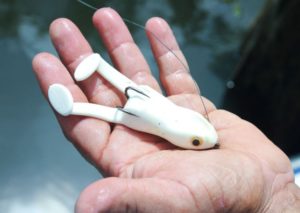
“My favorite topwater bait is the Stanley Top Toad frog lure. I get a lot of bites on it and I’ll usually fish it in white color,” he said.
“When it’s bright and sunshiny, bass looking for baitfish see that white belly and strike it. When it’s cloudy out, I’ll throw darker-color lures. You can trigger a strike by them going up to see what it is. The August and September topwater bite can be phenomenal, because they’re feeding on shad that are starting to congregate in the natural creeks and sloughs.”
Coutee also gave high praise to the Whopper Plopper lure from River2Sea, saying he caught a number of big fish on it, including one weighing more than 7 pounds.
A tip for newcomers
If you’ve never been to Black Lake, Jeansonne suggested first-time anglers fish north of the bridge and target curves in the main channel.
“The nice big curves in the channel, where it makes nice big swings and the trees are on the outside bend is the place visiting anglers will want to fish during their first time on Black Lake.”
